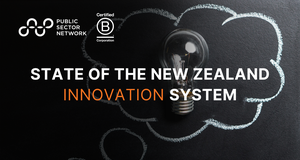There are many ways to create a plan, or maybe more accurately, there are many elements that could be part of a plan. In case you missed it, last week we had an article on why workforce planning was so vital to a public organisation.
Workforce plans should be customised and thus there is no set process for creating them. Nonetheless, there are few basics, like “starting with defining your workforce needs.” In many cases this means conducting “an internal scan.” Again, there are many ways to do this, but a good way is to start with an “employee satisfaction survey, or a diversity and inclusion survey.” This provides employee feedback and oftentimes, analytics as well. With these, “you’ll know where you stand in terms of hiring statistics, turnover rates, how long it takes for someone to be fully functional in their roles, and how long staff are staying. These things and other data provide a fundamental level of understanding for your workforce.” An external scan is also important. In BC, this is produced annually and is called “a labour market outlook by an organisation that specialises in doing that.” On top of that, external factors like the pandemic and “global impacts like the Black Lives Matter movement” should also be taken into account and considered. All of those have (or could have) a direct effect on employees and how they operate.
Gap analysis
“A gap analysis should then be conducted, which takes into account the current state and looks at where we actually want to be, or the desired state.” This is critical because it “shows what’s lacking.” And to overcome what’s lacking, “the next stage is consultation.” This is a more focused and narrow process than surveys and is about looking at gaps in particular, like “maybe gaps in IT or technology, or some other specific gaps.” This then leads to “strategic focus areas.” As an example, an organisation might discover through the surveys and analytics conducted earlier that quite a number of staff “are eligible to retire in the next five years.” Succession planning or knowledge transfer might be avenues to follow for this, but consultation could reveal that “there’s a groundswell for a mentorship program.” Other consultations could reveal that minority groups feel unsafe or that there is a culture of discrimination. “The value of doing surveying and consultation shows you what’s missing.” This then leads to “goals and initiatives to monitor, adjust and implement those initiatives that we set in place, and to plug any holes.”
A specific example
In the province of British Columbia, there is the BC Public Service Agency, which “looks at the data for all the 30,000 employees within the BC public service,” and which “sets the overall direction and guidance through corporate planning and processes across the entire BC public service, in consultation with all of the HR leads in the different ministries.” The Ministry of Children and Family Development is obviously one of those ministries, but “the needs of my workforce are going to be very different from the needs any other workforce in any other ministry.” So the BC Public Service Agency developed 3 core values and 6 areas of focus for all ministries. The core values are:
- Alignment – “This means aligning with ministry priorities, government priorities and corporate HR planning.”
- Evidence – “This is about being firmly grounded in internal and external qualitative and quantitative data to drive those areas of focus.”
- Readiness – “This is about demonstrating the capacity to take on the work required to meet the commitments that we’re making.”
6 areas of focus
The 6 areas of focus, like the core values, are generic and applicable to all ministries, but are designed to “be morphed into the individual needs of each ministry.” For example, “underpinning all of the areas of focus is culture and engagement, to ensure that everyone is engaged.” In terms of recruitment and retention , “we don’t experience a shortage in our ministry of attracting stuff, so we’re focusing more on the recruitment process.” For the area of anti-racism, diversity, inclusion and reconciliation , “we’ve added Indigenous, culturally safe recruitment practices, and a diversity officer because there were some complaints about racism in the workplace.” The final 3 are learning and development, leadership development and succession management. “We are focused on all three to making sure we’ve got folks lined up and in the right places, leaders who know what they are doing, and a talent pipeline coming in with knowledge being transferred from our more senior staff before they go.”
“If you fail to plan, you’re planning to fail.” Though this is a quote from an unknown source, it is very accurate because the point of workforce planning is to create a “greater return on the investment of your business’s biggest asset: your people.”

















